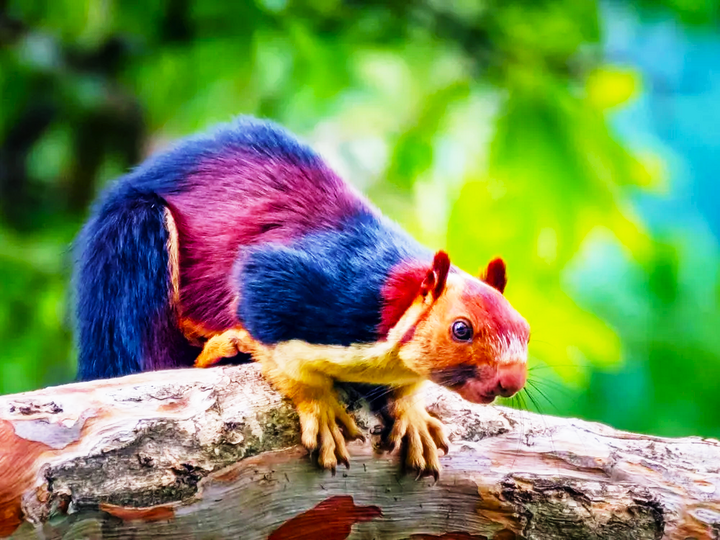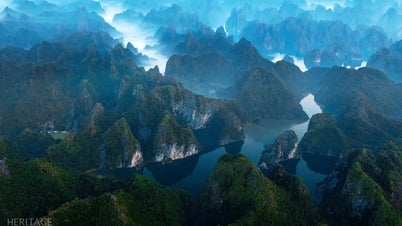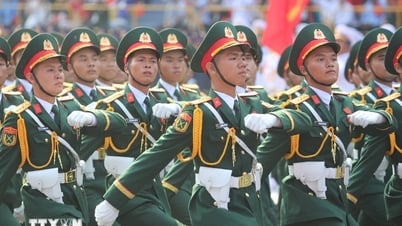The Indian giant squirrel or Malabar giant squirrel ( scientific name Ratufa indica), nicknamed the rainbow squirrel, is found mainly in the tropical forests and woodlands of central and southern India.
Although the Indian giant squirrel's belly and arms are cream-colored, the rest of its fur is a bit more exotic, with tones of orange, light purple, and reddish brown, which is why it is nicknamed the “rainbow squirrel.”

The “rainbow” rodent has been named the world’s largest squirrel by Guinness. (Photo: Kaushik Vijayan/SWNS.com)
These colourful animals weigh between 1.5 and 2kg, have ears that resemble those of a raccoon and have large feet and strong claws for climbing. Surprisingly, they can grow up to 1m long, twice the length of their American cousins, the grey squirrel Sciurus carolinensis. They are so large that they have been awarded the title of the world's largest squirrel by the Guinness World Records.
Indian giant squirrels live only in forests, where they build large, round nests high in trees. They use branches to support their nests and weave them through climbing trees, and finally warm their nests by lining them with leaves. Unlike many other squirrels, Indian giant squirrels prefer to hoard food in the treetops, eating mainly flowers, fruits, bark and nuts, bird eggs and insects. They forage for food by standing on their hind legs and grasping their food with their hands. They also use their large tail as a counterweight to improve their balance.
The species is usually solitary, only coming together in pairs during two breeding seasons, from February to March and again in August to September. But why are Indian giant squirrels so brightly colored? Scientists aren't sure what the exact genetic reason is, but they think the bright fur may help them camouflage better in the forest.
A study published in the journal Nature found that Indian giant squirrels lay completely motionless on a branch for half an hour as a snake eagle flew overhead. “They remained calm and silent; they spread their legs and clung to the branch to avoid detection,” the study authors wrote.
HUYNH DUNG (Source: Livescience/Animaldiversity)
Source





































































































Comment (0)